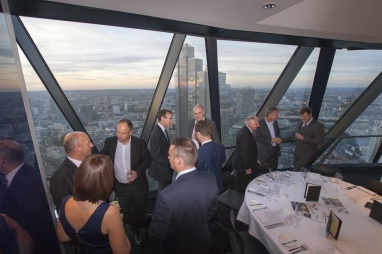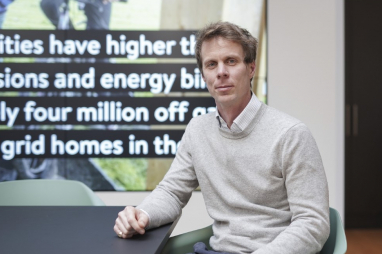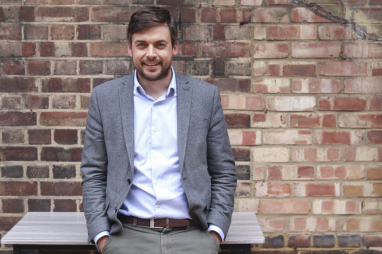- air jordan 6 carmine 2021 release date
- Air Jordan 11 Retro Cool Grey 2021 Cool Grey , IetpShops , Michael Jordan In The "White Cement" Air Jordan Retro IV (4)
- nike flyknit roshe electric green black Paris 308270 - SBD - nike boot with side zipper jeans black pants size , 111 Release Date
- adidas mercury vintage cars price list Release Date , SBD , petite adidas inventory management system flowchart
- Air jordan 6 rings bred black university red white yellow strike playoffs big kids - 001 Release Date - air jordan 1 retro first class flight white dynamic yellow black 2021 DN4904 - SBD
- all star air jordan 1 gotta shine
- air jordan 1 retro high og university blue 555088 134
- nike air force 1 low white gold dc2181 100 release date info
- Air Jordan 1 Blue Chill Womens CD0461 401 Release Date 4
- air jordan xxxv cq4227 004
- Home
- News and analysis
- Info hubs
- Events
- Video
- Case Studies
- About us
- Magazine
- Advertising
Produced for the industry by the Association for Consultancy and Engineering
Analysis
Firm Future: How technology change and market dynamics are shaping consultancies

Automation and better data management combined with earlier client engagement is pushing consulting firms to invest in both technology and new skills.
Discussion participants
- Chair: Antony Oliver, editor, Infrastructure Intelligence
- Peter Campbell, senior policy manager, ACE
- Tim Ellingham, director, Royal HaskoningDHV
- Neil Farmer, executive director, Tony Gee and Partners
- Fergus Gilmore, VP, Deltek
- Rolf Hansen, senior director, Deltek
- Simon Harrison, group strategy director, Mott MacDonald
- Geoff Hunt, director, Arup
- Colin James, head of urban and landscape design, WYG
- Simon Leonard, director,Ramboll
- Tom Locking, director, Sweett Group
- Daniel Mayhew, director for rail, Capita
- Andrew Noble, finance director, WSP Parsons Brinckerhoff
- David Whysall, director, Turner & Townsend
Consultancy firms across the world are facing many challenges from responding to technology change to managing economic and political developments in their operating markets. These dynamics vary but the increasingly diversified nature of today’s consultancy sector means that common trends are affecting most firms whether UK focussed or more globally spread.
“All over Europe we are seeing a transition for firms. Businesses are seeing 80 percent of their activities become more commoditised at one end, but the other 20 percent is getting more complex so companies have to be more on top of that with more transparency and risk management,” said Rolf Hansen senior director for Europe at Deltek. “So firms are moving both to the left and the right and we are seeing two tiers emerging where one area needs to support the digital commoditisation and the other area needs to develop the right skills,” he said.
In practical terms consultants report that the more complex 20 percent of work often means engaging more closely with clients at an earlier stage working towards understanding what outcomes the client is looking for in order to shape the project. “The skills that we are looking for now are people that can sit alongside the client, think with them and take them on a journey especially as clients may not have that resource. Softer skills such as communication and understanding others are essential,” said Tim Ellingham, director at Royal HaskoningDHV.
For some the changing nature of the client relationship means advising on a long term basis incorporating capital and operational expenditure within an overall investment plan. “As we go forwards clients may say we have £3bn to invest, can you help us look at how to get the maximum benefit from that?” said David Whysall, director at Turner & Townsend. “And that is great but it means we have to diversify our skills base and it is stretching us in terms of our thinking and capability,” he said.
In terms of skills then this means hiring in people that can work with clients earlier and potentially for longer as asset maintenance becomes more integral. “This year’s selection of graduates includes a fair number of management consultants who are absolutely all about testing and examining the client brief long before the designers get hold of it, and then helping the client deal with that asset during its life. It is a longer involvement,” said Geoff Hunt, director at Arup.
Digital revolution
At the more technology driven end of the spectrum firms are reporting that the digital revolution too is shaping their hiring practices. “A few years ago we would have recruited design engineers and CAD technicians and now we are hiring a merger of those “modelleers” - graduate engineers and technicians who need have to be BIM modellers. Boundaries are blurring now - you design as you model and that is changing the nature of who we recruit,” said Hunt.
Neil Farmer of Tony Gee agreed and pointed out that a new discipline is emerging within the profession. “We are creating a career path for the increasing number of specialist engineers and technicians that we are taking on, these people are engineers with a modelling capability that will respond to advances in technology. We are encouraging people into this parallel stream and creating a structure that allows them to progress to director status – this is the digital engineer of the future.”
Digitally savvy apprentices were seen as a key skills base for firms with some expecting to see a rising number of apprentices joining their businesses in the future “We are hiring and training apprentices that will be with us longer term,” said Tom Locking, director of Sweett Group. “We see great loyalty from apprentices.”
Winning work
As staff numbers and workloads increase to serve busy markets so is the cost of winning work. In the Infrastructure Intelligence/Deltek Pulse survey in September 61 percent of 164 senior infrastructure professionals said that this was the case. Discussion participants said that there were many reasons for this from increasingly complex bids to a loss of institutional capacity within clients, particularly those in the public sector. Combined with a transactional environment, a dearth of client expertise, slow decision making and increased pressure on government spending, procurement regimes have become increasingly onerous meaning that clients are not always getting the best value or outcomes that they really need. “The complexity of bids is going up as is the need to have mini competitions and rebidding within frameworks,” explained Peter Campbell, senior policy manager at ACE, which produced an extensive report into procurement in July. “Every government comes in talking about the need to reform procurement and at the end of the day what happens is every 4 to 5 years there is churn in government. People leave and those with institutional memory move on and new people don’t necessarily understand the quirks and nuances and there is a bit of shuffling back to how things used to be,” he said.
One of the side effects of this is a more selective approach from consultants who are increasingly careful about who to work for. And the increasingly digitised nature of the industry means that more data is available than ever on how much winning work is truly costing companies. “We are always making difficult decisions around what opportunities to pursue and why, and what the returns from those opportunities are,” said Hunt.
In some cases this also means more careful analysis of risk. “We have had to be more selective about what we do and we are becoming more like some contractors where they have very strict risk reviews though the process of tenders,” said Ellingham. “The cost of bids is frustrating and that is being driven by clients concern about challenge so their procurement advisors are having a greater influence, making the process more costly for the supply chain.”
Driving Value
Others said that there was still opportunity to drive value but it had to be evaluated on a client by client basis. “It is about how you innovate. If you have good fortune to have resources around the world you can use those, or you can look cleverly at how to take cost out of the value chain. If in the end you are being driven down to unacceptably low margins then go somewhere else,” said Simon Harrison, group strategy director at Mott MacDonald.
Another unfortunate side effect say consultants, is an increasing demand for unsustainably high levels of professional indemnity insurance and limits of liability which stifle innovation. “What I see are some public sector clients being advised to demand higher and higher PII and limits of liability without necessarily understanding if that’s appropriate. If we are being expected to take this increased level of risk we have to have to give us the opportunity to be rewarded for it-I’m not sure that this is recognised and there’s a balance to be had between that and being more risk averse if we are faced with that kind of exposure. You can’t expect innovation and then expose the industry to enormous limits of liability” said Hunt.
Firms debated whether low fees were a barrier to innovation with pressure on government departments to cut spending rising ahead of the comprehensive spending review in November. “We have a level of fee that we know our clients are prepared to pay for the levels of service and innovation they expect. If people are not prepared to pay that level we don’t work for them, which is a fortunate position to be in,” said Farmer. “We see fee levels from other some consultants that couldn’t possibly sustain our business.”
Smart clients
Clients that were getting innovation, efficiency and the best value from their supply chain were those that planned long term and procured effectively, said participants. “If you have got a pipeline and a certainty then the ability to innovate is there and therefore the market reacts to that,” said Whysall pointing to Anglian Water as a leading client in terms of facilitating innovation. The water company has a unique procurement approach with a multi-tiered delivery company the @one Alliance set up to carry out its £6bn investment programme over 15 years. In an interview with Infrastructure Intelligence in June managing director of the @one Alliance Dale Evans outlined the company’s unique procurement approach which promotes deeper collaboration. “They are the most efficient water company in the UK, their shareholders get good returns, the supply chain want to work with them and they facilitate the right environment. How do you make everyone into Anglian Water? For me it is about leadership, having leaders in place that believes that investing in this will pay dividends and drive the efficiency,” says Whysall.
Back to the public sector and there are pockets where the government is taking a different approach and seeing the benefits. The Department for International Development (DFID) was highlighted as a body which is using the consultancy sector early to create better outcomes.
“At DFID they are seeking innovation from the consultancy side, they are very open when they come forward with their projects. You submit your views quite anonymously and then they write the brief around that as they recognise that they don’t have that knowledge so they ask the consultants to come forward with that expertise to help shape the project. I haven’t seen that anywhere else,” said Colin James, head of urban and landscape design at WYG.
Despite the variety of approaches taken by clients there was agreement that the more collaboration at an early stage, and the more outcome focussed the brief then the more opportunity there is for innovation. “If the brief is the answer to the question not the question itself then that will stifle innovation,” pointed out Simon Leonard, director at Ramboll. “Ultimately it is trust and confidence to understand what the client needs and helping them deliver that.”
Future trends
Beyond the clients themselves market dynamics play a big role in how consultancy firms develop and diversify. Firms in general reported taking a long term view. “We look 5-10 years ahead at the strategy horizon. We look at how our customer’s needs are changing, perhaps around automation or the digitisation of infrastructure, and how we can deliver more for less - issues that are outside the political agenda. We spend quite a lot of time thinking about those things and less about external changes such as interest rates, and referenda that we can’t really plan for – although we do need to be able to react to those as needed,” said Harrison explaining that he was reasonably confident about the global outlook in general.
Asia, Europe and the Middle East were all mentioned as growing markets with servicing growth remaining a key challenge. “Our biggest challenge is availability of resource,” said Andrew Noble, financial director at WSP Parsons Brinckerhoff. “We are looking abroad at economies which are moving out of positive into negative such as Australia to see if we can get people to come back and feed the demand."
Demand in the UK was considered to exist across all sectors with an expectation that delayed projects in sectors such as aviation, energy and rail would move ahead. The Northern Powerhouse ambition too is being taken seriously. “We are fairly confident that George Osborne’s ambition is something we can look to being achieved,” said James, whose company WYG is headquartered in Leeds. “But the thing to watch is how that happens, infrastructure takes a long time to show results and we are in a 5 year political cycle. So the sorts of things that we are going to see will be things that will be materially felt within the next 5 year period and so big long term infrastructure can’t be a top priority.” This could mean smaller scale urban development and transport moves ahead rather than major road and rail projects.
Continuity within government in the UK, with a one party majority was broadly considered a positive move by participants.” Having a majority Conservative government gives confidence to business generally. With the comprehensive spending review coming up there are some question marks but generally the view is that infrastructure is good for the economy and creates jobs. People are optimistic particularly organisations that have got some diversification,” said Fergus Gilmore, VP at Deltek. “Diversity of work and a broad range of clients and sectors& is really important to be able to sustain the business going forwards,” agreed Geoff Hunt who also called for more certainty from government on important infrastructure investment.
In the rail sector firms discussed the current spending period and the impact of Network Rail’s CP5 overspend on future planning. “We are not sensing a major scaling back,” said Daniel Mayhew, director of rail at Capita. “When it comes to CP6 planning that is going to be very interesting in terms of government’s confidence in Network Rail or in terms of the industry’s ability to deliver to cost. But you can question whether it is inefficiency in delivery or whether there is lack of realism in the pricing for these major schemes,” he said also noting that new clients entering the UK rail market as major projects emerge was good news for consultants.
But the looming comprehensive spending review was a cloud on the horizon for firms who pointed out that none protected governmental departments were facing cuts of up to 40 percent with the ACE noting that cuts in 2010 impacted economic growth. “What government found in 2010 was that the capex that they cut out was incredibly detrimental to the economy and in the intervening 4-5 years they have had to replace 75 percent of it. So we may see more emphasis on making cuts from operational expenditure,” said Campbell.
Looking to the future then firms were well aware of the multiple pressures shaping their businesses across the board from technology change pushing commoditisation and automation and the development of new “modelleers” to the need for more strategic thinking and skills to support deeper engagement at the client facing end of the business. And as technology change moves at a seemingly exponential rate firms occupy varying points on that curve, all of them working to ensure that their businesses benefit from the digital revolution, and that these benefits are harnessed for clients long into the future.





